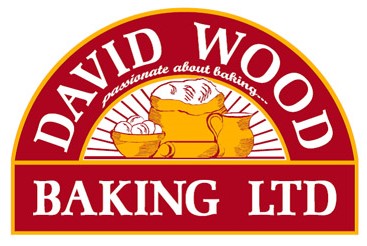Information
-
Unit/ Location:
-
Department:
-
Machinery name:
-
Model:
-
Serial # (if available):
-
Manufacturer:
-
Checked by:
-
Conducted on:
-
Purpose:
- Purchasing
- Commissioning
- Inspection
1.0 - General
-
1.1 Has the equipment been designed for the task it is performing?
-
Details
-
Photos
-
1.2 Are there clear and comprehensive work instructions in the language of the user in place for the safe operation of this machine?
-
Details
-
Photos
-
1.3 Are the START, STOP, RESET and E-Stop controls clearly identified?
-
Details
-
Photos
-
1.4 Could materials or liquids be ejected from the equipment?
-
Details
-
Photos
-
1.6 Are any very hot surfaces accessible?
-
Details
-
Photos
-
1.5 Is there any possibility of fire or over heating? e.g. excessive friction, electric motor burning out, naked flame or spark, thermostat or cooling system failure.
-
Details
-
Photos
-
1.7 Are any very cold surfaces accessible?
-
Details
-
Photos
-
1.9 Does the equipment include a pressure vessel?
-
Details
-
Photos
-
1.10 Could a blockage cause over pressure in the equipment?
-
Details
-
Photos
-
1.11 Is there a risk of flammable vapours creating a potentially explosive atmosphere?
-
Details
-
Photos
-
1.8 Is there any possibility of hazardous liquids or gases escaping?
-
Details
-
Photos
-
1.12 Is there a risk of dust or fine fibres creating a potentially explosive atmosphere?
-
Details
-
Photos
-
1.13 Are sufficient and appropriate fire extinguishers located within easy access to the machinery?
-
Details
-
Photos
2.0 - Guarding
-
2.1 Is it possible to access any moving and/or hazardous parts or materials? These may be behind unsecured covers or guards.
-
Details
-
Photos
-
2.3 Are all FIXED guards secured with suitable fixings that require a tool not kept in the workplace?
-
Details
-
Photos
-
2.4 Can the guarding be easily defeated without the use of tools?
-
Details
-
Photos
-
2.5 Can settings & adjustments be carried out safely?
-
Details
-
Photos
-
2.6 Can the machine be loaded and unloaded safely?
-
Details
-
Photos
-
2.5 Can settings & adjustments be carried out safely?
-
Details
-
Photos
-
2.8 Are the guards made from a suitable material? e.g. shatterproof, sufficient strength
-
Details
-
Photos
-
2.9 Have all sharp edges been removed?
-
Details
-
Photos
-
2.7 Is guarding positioned so that it does not restrict the operators view?
-
Details
-
Photos
3.0 - Safety / System Controls
-
3.1 How is the safety circuit designed to ensure reliable operation?<br>a) Hard wiring<br>b) Safety relay<br>c) Safety PLC
-
Details
-
Photos
-
3.2 Are standard electrical switches, relays or other non-safety rated components used in safety circuits?
-
Details
-
Photos
-
3.3 Are single channel safety devices used in safety circuits?
-
Details
-
Photos
-
3.4 Are dual channel safety devices used in safety circuits?
-
Details
-
Photos
-
3.5 Does the machine stop immediately after the E-stop is activated?
-
Details
-
Photos
-
3.6 Are guards secured shut until the machine comes to a complete standstill after the E-stop has been activated?
-
Details
-
Photos
-
3.7 Are guard switches fitted to all guards that can be opened without a tool?
-
Details
-
Photos
-
3.8 Are the guard switches 'Positively acting'?
-
Details
-
Photos
-
3.9 Are the guard switches positioned so it is not possible to open the guard without activating the safety device?
-
Details
-
Photos
-
3.10 Do all of the guard switches stop the machine in the same way as activating the E-Stop?
-
Details
-
Photos
-
3.11 Does the STOP control bring the equipment to a safe condition in a safe manner?
-
Details
-
Photos
-
3.12 Is all stored energy (compressed air, hydraulic, springs) automatically released when a guard is opened?
-
Details
-
Photos
-
3.13 Is there immediate access to an E-Stop or similar device at the operator's working position?
-
Details
-
Photos
-
3.14 Do all the E-Stops on the machine operate in the same way?
-
Details
-
Photos
-
3.15 Are the emergency stops suitable for the work area? e.g. Red mushroom button, pull cable, kick board
-
Details
-
Photos
-
3.16 Could an operator activate the equipment with one hand while exposing their other hand to a hazard?
-
Details
-
Photos
-
3.17 Where two hands are required to operate equipment, are two hands required continuously to operate the equipment?
-
Details
-
Photos
-
3.18 Where two hands are required to operate equipment, does the equipment require both buttons to be pressed within 0.5 seconds of each other?
-
Details
-
Photos
-
3.19 After activating a guard switch or E-Stop, does the machine require a RESET before restarting?
-
Details
-
Photos
-
3.20 Where light curtains are used, are they positioned at a suitable distance to safely stop the machine before contact with hazardous parts is possible?
-
Details
-
Photos
-
3.21 Are the controls positioned and designed to prevent accidental operation?
-
Details
-
Photos
-
3.22 Are all push buttons in good condition, and operational?
-
Details
-
Photos
-
3.23 Are all indicator lamps in good condition and working?
-
Details
-
Photos
-
3.24 Are all push buttons and indicator lamps clearly labelled in the local language or with a universally understood format? e.g. O - Off, I - On
-
Details
-
Photos
-
3.26 The machine should only start moving after the RESET button has been activated and then the START button. Does the machine operate this way?
-
Details
-
Photos
-
3.25 Can the equipment be started from only one position?
-
Details
-
Photos
-
3.28 If there is a delayed start or remote starting on the equipment, is there an appropriate warning system?
-
Details
-
Photos
-
3.29 Is the equipment stable under its own weight or bolted securely to the floor?
-
Details
-
Photos
-
3.27 Is there good visibility around the machine from the position where the machine can be started?
-
Details
-
Photos
4.0 - Electrical System
-
4.1 Is the incoming Earth correctly and securely terminated, with measured resistance < 1Ω?
-
Details
-
Photos
-
4.2 Is the main Earth clearly identified?
-
Details
-
Photos
-
4.3 Based on the Phase Conductor size, is the incoming Earth correctly sized?
-
Details
-
Photos
-
4.4 Does each Earth wire have its own dedicated terminal?
-
Details
-
Photos
-
4.5 Is Green & Yellow coloured insulation only used on Earth cables?
-
Details
-
Photos
-
4.6 Is all of the equipment and associated metalwork earthed or suitably earth bonded?
-
Details
-
Photos
-
4.7 Is the main Neutral clearly identified?
-
Details
-
Photos
-
4.8 Do the mains supply terminate at a lockable isolator?
-
Details
-
Photos
-
4.9 Does the isolator have to be switched off before the panel can be opened?
-
Details
-
Photos
-
4.10 Is the isolator easily defeated?
-
Details
-
Photos
-
4.11 Are electrical panels locked and require a tool, not kept in the workplace, to be unlocked?
-
Details
-
Photos
-
4.12 Is the highest voltage clearly identified on the electrical panel?
-
Details
-
Photos
-
4.13 Is short circuit protection fitted?
-
Details
-
Photos
-
4.14 Is over current circuit protection fitted?
-
Details
-
Photos
-
4.15 Are all terminals above 50V AC or 75V DC protected from fingertip access/ ⌀12mm probe?
-
Details
-
Photos
-
4.16 Are all permanently live circuits appropriately marked?
-
Details
-
Photos
-
4.17 Do all electrical terminations have identification which corresponds with the electrical diagram?
-
Details
-
Photos
-
4.18 Are all multi-strand wires fitted with ferrules before termination?
-
Details
-
Photos
-
4.19 Do all wires run continuously from terminal to terminal or terminal to component with no joints?
-
Details
-
Photos
-
4.20 Are there any loose wires in the electrical panel?
-
Details
-
Photos
-
4.21 Is the Power Supply Unit bonded to Earth?
-
Details
-
Photos
-
4.22 Is the armour from all armoured cables properly connected?
-
Details
-
Photos
-
4.23 Can all electrical panel doors be opened beyond 90 degrees?
-
Details
-
Photos
-
4.24 Are all metal electrical panel doors fitted with Earth straps to the main panel?
-
Details
-
Photos
-
4.25 Is the panel door free from mains voltage components?
-
Details
-
Photos
-
4.26 Are all electrical panels located outside the guarding?
-
Details
-
Photos
-
4.27 Are all electrical cables free from damage, in good condition and clear of moving parts?
-
Details
-
Photos
-
4.28 Do all electrical components have a suitable ingress protection (IP) rating for the environment?
-
Details
-
Photos
-
4.29 Where equipment is in an area where a potentially explosive atmosphere could develop, is all of the electrical equipment suitably rated?
-
Details
-
Photos
-
4.30 Do all external electrical cables have suitable physical protection for the environment?
-
Details
-
Photos
-
4.31 Do all electrical panels have a suitable ingress protection (IP) rating for the environment?
-
Details
-
Photos
-
4.32 Are all control panels ventilated or temperature controlled where necessary?
-
Details
-
Photos
-
4.33 Are the electrical panel voltages segregated and clearly identified?
-
Details
-
Photos
-
4.34 Is there a circuit diagram available in each control panel?
-
Details
-
Photos
-
4.35 Are there pneumatic or hydraulic components in the electrical panels?
-
Details
-
Photos
-
4.36 Is the electrical panel free from debris?
-
Details
-
Photos
-
4.37 Are there any High Voltage cables in ducts with Low Voltage cables?
-
Details
-
Photos
-
4.38 Where electrical sockets are fitted, do they have their own protection?
-
Details
-
Photos
-
4.39 Is the available lighting sufficient for working in the electrical panels?
-
Details
-
Photos
5.0 - Pneumatic System
-
5.1 Can the compressed air supply be isolated and locked out at the machine?
-
Details
-
Photos
-
5.2 Is the compressed air isolation valve outside of the guarding?
-
Details
-
Photos
-
5.3 Is all of the compressed air exhausted whilst in an emergency stop state?
-
Details
-
Photos
-
5.4 Are all pneumatic valves / solenoids clearly identified, accessible and secure?
-
Details
-
Photos
-
5.5 Do all pneumatically powered moving parts immediately return to a safe position when the compressed air is isolated?
-
Details
-
Photos
-
5.6 Is there a pneumatic circuit diagram available in the control panel?
-
Details
-
Photos
-
5.7 Is the equipment free from air leaks?
-
Details
-
Photos
-
5.8 Are all pneumatic exhaust ports fitted with silencers?
-
Details
-
Photos
6.0 - Hydraulic System
-
6.1 Can the hydraulic pump be isolated and locked out in the work area?
-
Details
-
Photos
-
6.2 Are all hydraulic hoses in good condition?
-
Details
-
Photos
-
6.3 Is there a pressure relief valve in working condition?
-
Details
-
Photos
-
6.4 Do all hydraulically powered moving parts immediately return to a safe position when the hydraulic pack is isolated?
-
Details
-
Photos
-
6.5 Are hose burst valves fitted to cylinders used in lifting and lowering?
-
Details
-
Photos
-
6.6 Is there a hydraulic circuit diagram available in the control panel?
-
Details
-
Photos
-
6.7 Is the work area free from oil and the equipment free from oil leaks?
-
Details
-
Photos
7.0 - Process Liquids and Gases
-
7.1 Are all pipes appropriately colour coded and have their contents marked?
-
Details
-
Photos
-
7.2 Do all pipes have the direction of flow marked?
-
Details
-
Photos
-
7.3 Can the steam supply be isolated and locked out in the work area?
-
Details
-
Photos
-
7.4 Can the water supply be isolated and locked out in the work area?
-
Details
-
Photos
-
7.5 Can all other liquid or gas supplies to the equipment be locked out in the work area?
-
Details
-
Photos
-
7.6 Are all liquid and gas supplies free from leaks?
-
Details
-
Photos
8.0 - Pressure Systems
-
8.1 Is the pressure vessel name plate readable?
-
Details
-
Photos
-
8.2 Is a unique Pressure Relief Valve or similar safety device fitted to the each pressure vessel?
-
Details
-
Photos
-
8.3 Is the Pressure Relief Valve secured against unauthorised adjustment?
-
Details
-
Photos
-
8.4 When was the Pressure Relief Valve last tested?
-
Details
-
Photos
-
8.5 When was the Pressure Relief Valve last overhauled?
-
Details
-
Photos
-
8.6 When was the Pressure Vessel last checked by an approved inspector?
-
Details
-
Photos
9.0 - Documentation, Instruction & Identification
-
9.1 Are all warning labels in place and suitable for the hazards identified?
-
Details
-
Photos
-
9.2 Is the machine Technical File available?
-
Details
-
Photos
-
9.3 Is the Technical File in the language of the user?
-
Details
-
Photos
-
9.4 For CE marked equipment, is a Certificate of Conformity in the Technical File?
-
Details
-
Photos
-
9.5 For CE marked equipment, are the relevant BS/EN Standards listed in the Technical File?
-
Details
-
Photos
10.0 - Training
-
10.1 Are all operators trained to use the equipment safely?
-
Details
-
Photos
-
10.2 Is the delivered training documented and recorded?
-
Details
-
Photos
-
10.3 Is a Pre-Use checklist available for every operator?
-
Details
-
Photos
-
10.4 Has a Job Safety Analysis been carried out on this equipment?
-
Details
-
Photos
11.0 - Maintenance
-
11.2 Do the task instructions detail all of the potential hazards?
-
Details
-
Photos
-
11.1 Is there a Planned Maintenance schedule for this piece of equipment?
-
Details
-
Photos
-
11.3 Is there reasonable access for maintenance?
-
Details
-
Photos
-
11.4 Are all protective devices (Circuit Breakers, E-Stops, Pressure Relief Valve and Safety Switches etc.) subject to routine functional testing, with the results recorded?
-
Details
-
Photos
Conclusion
-
Recommendation:
-
Conclusion:
-
Signature:













